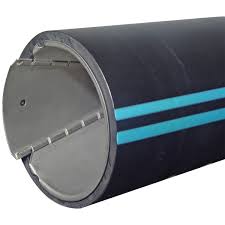Dec . 15, 2024 15:43 Back to list
HDPE Reducer Coupling Manufacturer for Durable and Reliable Pipe Solutions
Understanding HDPE Reducer Couplings A Comprehensive Guide for Manufacturers
High-Density Polyethylene (HDPE) is one of the most versatile materials used in various industries, particularly in piping and tubing applications. Among the various components made from HDPE, reducer couplings play a crucial role in facilitating the connection between pipes of different diameters. This article aims to explore the significance of HDPE reducer couplings, focusing on manufacturers and what they need to know to produce high-quality products.
What are HDPE Reducer Couplings?
HDPE reducer couplings are fittings used to connect two pipes or tubes of different diameters. They are essential in piping systems where the flow needs to transition smoothly from a larger pipe to a smaller one or vice versa. These couplings are designed to maintain the integrity and durability of the piping system while ensuring optimal flow and minimizing turbulence.
The Importance of Quality Manufacturing
Manufacturers of HDPE reducer couplings must prioritize quality at every stage of production. HDPE itself is known for its resistance to corrosion, chemicals, and UV rays, which makes it an ideal choice for various applications, including water supply, sewage systems, and gas distribution. However, the quality of the reducer coupling is determined by factors such as the design, the manufacturing process, and the quality control measures in place.
1. Material Selection Using high-grade HDPE resins is crucial for ensuring the longevity and reliability of the reducer couplings. Manufacturers should source materials that comply with industry standards and regulations, as this will ultimately influence the performance of the final product.
2. Manufacturing Process The production methods, including injection molding and extrusion, should be optimized to minimize defects and ensure uniformity. Advanced technology in manufacturing processes will lead to fewer errors and better overall product quality.
3. Quality Control Implementing stringent quality control measures is imperative. Manufacturers should conduct tests to assess the durability, pressure tolerance, and overall performance of the couplings. Various tests, such as hydrostatic pressure testing and environmental stress crack testing, can help ensure that the couplings meet the necessary standards.
Applications of HDPE Reducer Couplings
hdpe reducer coupling manufacturer

HDPE reducer couplings have a wide range of applications across various industries. Some notable areas include
- Water Supply Systems HDPE is widely used in municipal water supply systems due to its resistance to corrosion and chemicals. Reducer couplings help manage the flow from larger mains to smaller service lines.
- Wastewater Management In sewage systems, HDPE reducer couplings facilitate the connection of pipes of varying sizes, ensuring an efficient flow of wastewater and reducing the risk of blockages.
- Gas Distribution HDPE is increasingly being used for gas distribution due to its strength and flexibility. Reducer couplings play a crucial role in connecting gas pipes of different diameters.
- Irrigation Systems In agricultural applications, HDPE reducer couplings are essential for connecting different sizes of tubing, optimizing water flow in irrigation systems.
Challenges Faced by Manufacturers
Despite the advantages of manufacturing HDPE reducer couplings, several challenges may arise. These include fluctuations in raw material prices, stringent regulatory requirements, and the need for continuous technological advancements. Manufacturers must be prepared to adapt to these challenges by investing in research and development and evolving their manufacturing techniques to meet market demands.
Conclusion
In the competitive landscape of plumbing and piping solutions, manufacturers of HDPE reducer couplings must focus on producing high-quality products that meet the industry's stringent requirements. By prioritizing material selection, refining the manufacturing process, and implementing rigorous quality control measures, manufacturers can ensure that their HDPE reducer couplings are reliable, durable, and fit for purpose. As industries continue to evolve and seek more efficient solutions, the demand for high-quality, well-manufactured HDPE fittings will likely increase, positioning manufacturers at the forefront of innovation and excellence in this critical market.
-
High-Quality PVC Borehole Pipes Durable & Versatile Pipe Solutions
NewsJul.08,2025
-
High-Quality PVC Perforated Pipes for Efficient Drainage Leading Manufacturers & Factories
NewsJul.08,2025
-
High-Quality PVC Borehole Pipes Durable Pipe Solutions by Leading Manufacturer
NewsJul.08,2025
-
High-Quality PVC Borehole Pipes Reliable PVC Pipe Manufacturer Solutions
NewsJul.07,2025
-
High-Quality UPVC Drain Pipes Durable HDPE & Drain Pipe Solutions
NewsJul.07,2025
-
High-Quality Conduit Pipes & HDPE Conduit Fittings Manufacturer Reliable Factory Supply
NewsJul.06,2025

